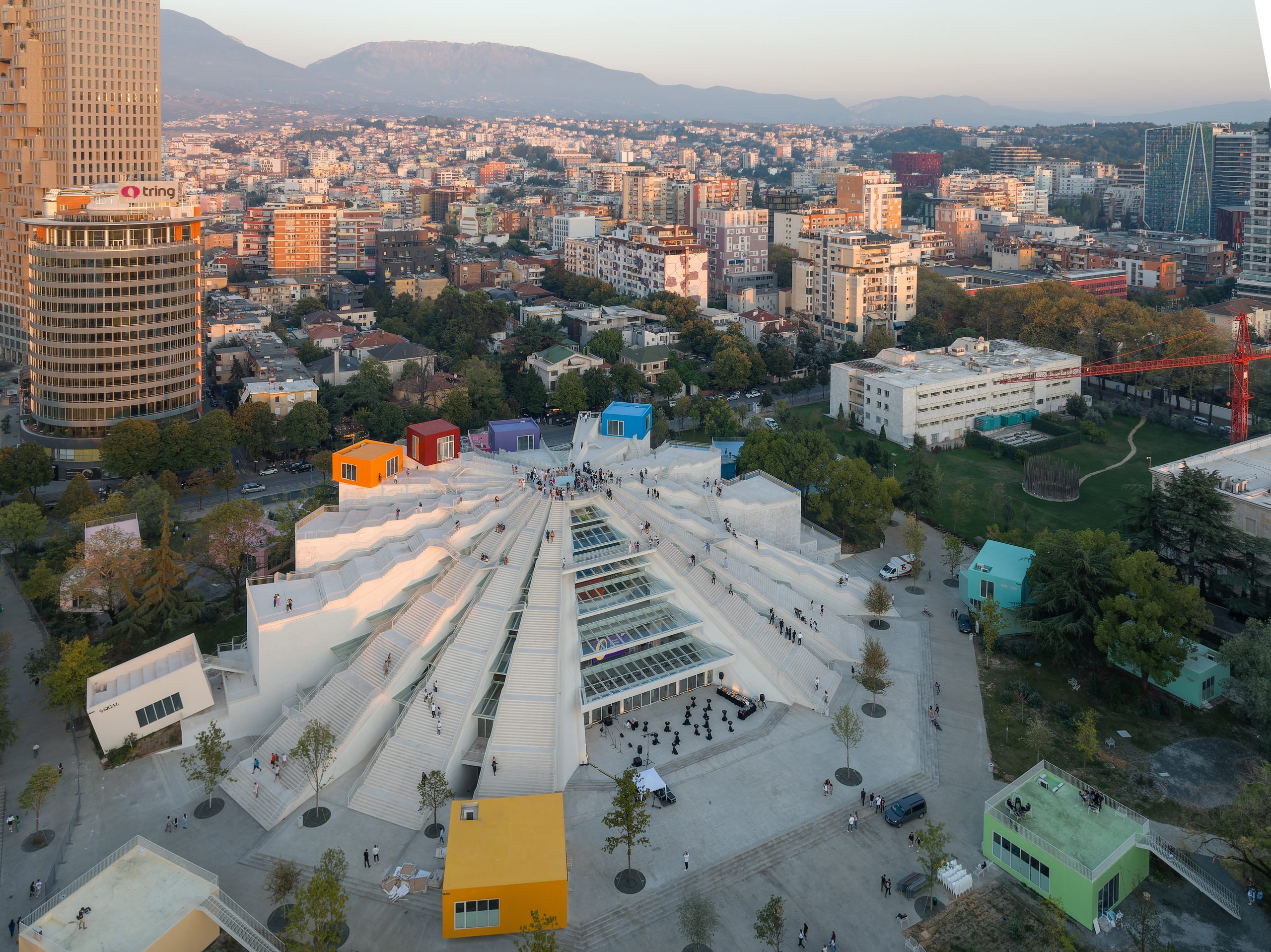The Pyramid of Tirana, originally built as a museum dedicated to the communist dictator Enver Hoxha, has been dramatically transformed into a new kind of cultural hub. Reusing the concrete structure, the Pyramid is now an open sculpture in a new park. The park and the sculpture are home to an ensemble of colourful boxes, scattered in and around the original building that house cafés, studios, workshops, start-up offices, incubators, festivals, and classrooms where Albanian youth will learn various technology subjects for free. Steps have been added to the building’s sloping façades, allowing the people of Albania to literally walk all over the showpiece of the former dictator.First opened as a museum in 1988, the Pyramid of Tirana has led numerous lives. Since the fall of the communist regime, the building was variously used as a radio station, a nightclub, a conference venue, a broadcast centre and, during the 1999 Kosovo War, a base for NATO. The ever-changing uses, along with incomplete previous renovation plans, left behind a patchwork of alterations that made the interior cluttered and dark. In recent decades, the question of what to do with the building proved highly controversial. A study published in 2015, however, showed that the majority of Albanians were opposed to demolishing the building, and in 2017 this desire was honoured when the government announced plans to transform the concrete monolith. This promise was carried out with the help of the Albanian-American Development Foundation (AADF) and the Municipality of Tirana, with the decision made to turn the building into a nurturing environment for young Albanians.The transformation of the Pyramid shows how a building can be made suitable for a new era, while at the same time preserving its complex history, and demonstrates that historic brutalist buildings are ideal for reuse. The project also meets a number of the Sustainable Development Goals outlined by the United Nations. Rather than wastefully demolish the structure, its robust concrete shell is adapted along circular economy principles. As the majority of the structure is open to the surroundings for most of the year, only the added boxes housing the educational program need to be climate-controlled, reducing energy consumption. Social sustainability is advanced in the building’s new use, with the educational programme advancing education and preparing the next generation for success.

